|
Sweeney's Men and Fairport Convention
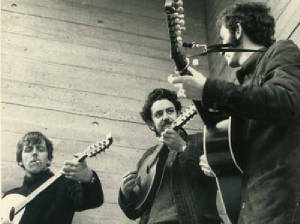
Sweeney's Men were the first of the modern folk-traditional Irish groups, the proto of what was to become known as "Celtic Music". They had
a huge impact on almost everything that followed. In the late sixties, the folk revival in Ireland was chiefly in the hands
of the Dubliners and Clancy Brothers, very much into vigorous ballad singing, and Sweeney's Men injected some fresh instrumentals
into the scene. The original line up was Andy Irvine, Johnny Moynihan and Joe Dolan, in 1966. After having recorded some singles and played several gigs,
Dolan left and was replaced by Terry Woods in 1967, which became the most famous lineup of this group. Their instrumentation
included bouzouki, guitar, banjo, mandolin, tin whistle, harmonica, and concertina.
Certainly the most famous contribution of Sweeney's Men (besides some fine music!) was the introduction
of the bouzouki in 1967 by Moynihan. This original bouzouki was a 6-string version, which has since been replaced in
most groups by the 8-string variant that is now so common.
Their repertoire ranged from Irish songs like Willy O'Winsbury, to the Scots Rattlin' Roarin' Willie,
to American folk like Tom Dooley. Among this mix are original selections so masterful that they entered the traditional scene
so quickly that they are seldom recognized now as recent compositions. ( Moynihan's Standing On the Shore is a prime example.)
and led the way to such songs as Crazy Man Michael, written by Richard Thompson and Dave Swarbrick. Never mind where
Sweeney's Men came from their music was and is exciting and spontaneous.
Andy Irvine
Johnny Moynihan
Terry Woods
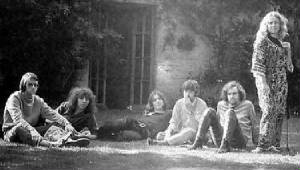
Fairport Convention, the greatest band of all time, the greatest album of
all time, Liege and Lief; the combination? an exquisite mix of The British Tradition and a band in their full confidence,
a mix of the old with the new, witness the power of the combined writing powers of Richard Thompson and Dave Swarbrick on
Farewell, Farewell and Crazy Man Michael. What we have here is not just another band that came out of the late sixties, but
something incredibly unique, the birth of truly British music, as Ashley Hutchings would describe it years later in
a song, appropriately called Wings, we had finally grown "our home-made wings", and things would never be quite the same again.
Returning from a gig in Birmingham on May 14, 1969, the band's van crashes killing drummer Martin
Lamble and Richard Thompson's then girlfriend Jeannie Franklin. Ashley Hutchings was hospitalised for two months with
acute facial injuries. After the crash, Fairport got together for a meeting and decided they
would carry on. It was, at this point that Dave Swarbrick joined as a full member of the band, on fiddle and they
also auditioned for a new drummer, this turned out to be Dave Mattacks, who also, as it turned out, played piano as well.
Fairport had, in Ashley Hutchings' words, "opened a whole new can of worms with A Sailor's
Life and we decided there and then to go wholeheartedly in that folk rock direction. So that was quite an auspicious meeting".
Fairport moved down into an old Queen Anne house in a viilage named Farley Chamberlayne, near Winchester and began
work on Liege and Lief
Ashley. " After the crash, we got together for a
meeting and decided we'd carry on, bring in Dave Swarbrick on fiddle and audition for a new drummer. We'd opened a whole new
can of worms with A Sailor's Life and we decided there and then to go wholeheartedly in that folk rock direction. So that
was quite an auspicious meeting."
The Liege and Lief lineup
Sandy Denny, vocals
Dave Mattacks, drums
Ashley Hutchings, bass guitar
Simon Nicol, guitars
Dave Swarbrick, violin and viola
Richard Thompson, guitars.
An interesting coda to all this is that after Ashley Hutchings had left Fairport Convention at the end of 1969 Some talk of an Irvine/Moynihan/Woods/Ashley Hutchings combination of Sweeney's
Men came up in 1970 or 1971, but the dynamics that caused the breakup after Irvine left remained to a certain extent,
and this never got off the ground., instead, Steeleye Span was formed and their first album, Hark! The Village Wait has
a definite "Celtic" feel to it.
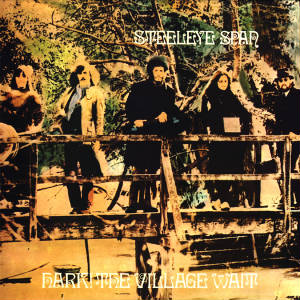
|
| RCA SF 8113 (LP, UK, June 1970) |
This site is very much under construction
please bear with us, we'll get there....
|
 |
|
 |
 |

|
| Transatlantic TRA170 1968 |
Side One
Rattlin' Roarin' Willie
Sullivan's John
Sally Brown
My Dearest Dear
The Exile Jig
The Handsome Cabin Boy
|
|
Side Two
Dicey Riley
Tom Dooley
Willy O' Winsbury
Dance to Your Daddy
The House Carpenter
Johnstone
Raynard the Fox
|
|
 |
 |
 |
 |
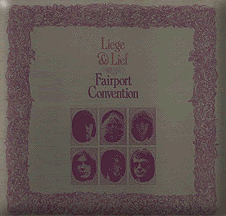
|
| Island ILPS 9115 December 1969 |
|
|
Side One:
Come All Ye 4:55
Reynardine 4:33
Matty Groves 8:08
Farewell, Farewell 2:38.
Side Two:
The Deserter 4:10
Medley:
*The Lark in the Morning;
*Rakish Paddy;
*Fox-Hunter's Jig;
*Toss the Feathers 4:00
Tam Lin 7:20
Crazy Man Michael 4:35.
All tracks Trad. arr. Fairport
Convention
except Track 1 Sandy Denny / Ashley Hutchings
Track 4 Richard Thompson
Track 8 Richard Thompson /
Dave Swarbrick
|
|
 |
 |
 |
 |
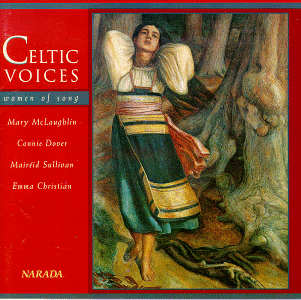
|
| Narada CD63921 1995 |
the music you heard on entering:
an Irish dance tune,
Madam Maxwell,
played on the Irish harp by
Máire Ni Chathasaigh
from her album
The New-Strung Harp
the photograph on the front page
South Wales
|
| |
|
 |
 |
|
 |
 |
 |
|
|
 |
 |
 |
|
|
|

